The Strategy Behind Washington’s Destabilization Of Venezuela
Venezuela represents everything that the U.S. opposes in the region: socialism, anti-imperialism, economic independence via energy exports and a viable ally for China, Russia, Iran and other countries that oppose the hegemonic designs of Washington.
Eric Draitser
MintPress News
NEW YORK (Analysis)– The corporate media continues to churn out endless stories detailing repression, state violence and socioeconomic collapse in Venezuela. Conspicuously absent from their stories, however, is the fact that much of the turmoil in the Bolivarian Republic is a result of an economic and psychological war being waged against the country by right-wing elements inside Venezuela and their backers in the United States.
Naturally, this charge has been dismissed out of hand by the imperial stenographers at the New York Times, Washington Post and The Economist, who continue to insist that there’s nothing at all nefarious going on in Venezuela aside from the “corrupt dictatorship” led by President Nicolas Maduro. Of course, were there real journalists covering Venezuela, they’d make note of the fact that a campaign of economic and psychological war, targeted assassinations, and corporate intrigue have helped plunge the country into an existential crisis.
Rather predictably, none of those factors are incorporated into a well-rounded analysis of the situation in Venezuela; instead, it is sensationalist headlines and narrowly defined issues that grab the media spotlight. And perhaps no concept is more taboo within elite media circles than the strategic imperatives of the U.S.-led system of global political and economic hegemony that dominates the world. No, for the yellow journalists employed by the likes of Newscorp, Comcast and Amazon, Venezuela is just another wayward child in need of a stern rebuke and hand-holding back to the path of the good little oil colony.
Ultimately, the empire’s beef with Venezuela is two-fold. First, it is a country that has attempted to free itself of the architecture of neo-colonial domination that the U.S. and other global powers use to control the Global South. Secondly, Venezuela represents everything that the U.S. opposes in the region: socialism, anti-imperialism, economic independence via energy exports and a viable ally for China, Russia, Iran and other countries that oppose the hegemonic designs of Washington.
Regime change is the ultimate objective in the destabilization of Venezuela, a bringing to heel of the rogue state in order to serve Washington’s global objectives. The U.S. thirsts for the reversal of the Bolivarian Revolution and the legacy of the late Venezuelan President Hugo Chavez.
Target: Venezuela
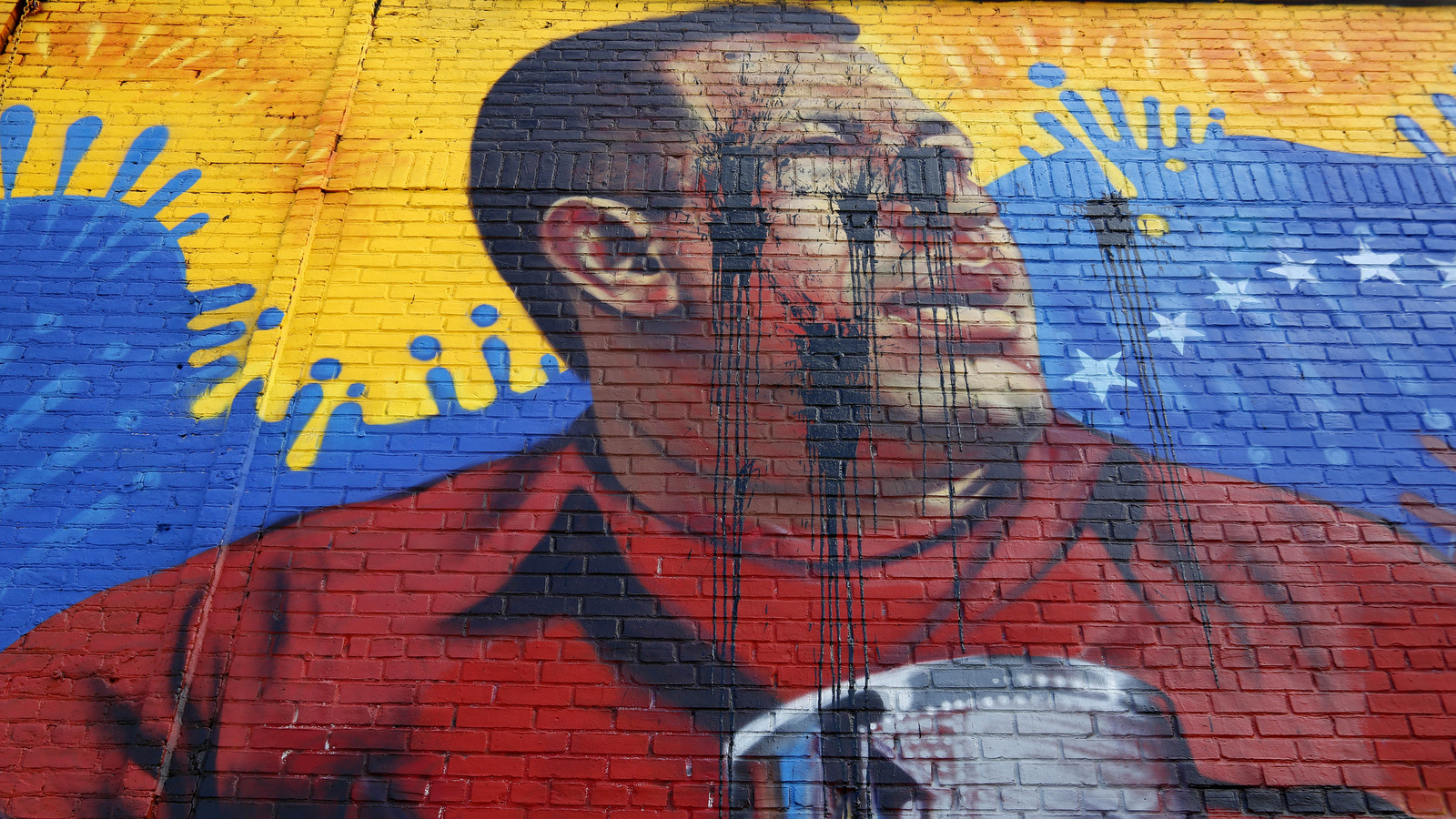 A mural featuring an image of former Venezuelan President Hugo Chavez was defaced in the Bronx borough of New York, Tuesday, May 9, 2017. (AP/Seth Wenig)
A mural featuring an image of former Venezuelan President Hugo Chavez was defaced in the Bronx borough of New York, Tuesday, May 9, 2017. (AP/Seth Wenig)
There is a misconception spreading through the Beltway like an airborne virus, infectious in its obliviousness to reality: the idea that the administration of President Donald Trump is so bogged down by scandal and controversy that it cannot achieve any geopolitical and strategic objectives. In fact, the opposite is true. Like a cornered animal, Trump and his team are exceedingly dangerous, both in their unpredictability and, strangely enough, also in their predictability.
And when it comes to Venezuela, their strategy is transparent.
Oil reigns supreme in the minds of Trump, Secretary of State Rex Tillerson and the rest of the administration. In the case of Venezuela, oil remains the lifeblood of its economy. So in a very real sense, the White House and State Department’s interests converge with the economic imperatives of corporate America in the Bolivarian Republic.
Tillerson represents perhaps the perfect embodiment of U.S. government attitudes toward Venezuela. A slick oil man through and through, Tillerson has long sought to destabilize Venezuela in an attempt to reassert ExxonMobil’s supremacy in the country.
Venezuela’s recent rocky history begins with Chavez’s nationalization of the oil sector under the state oil company PDVSA in 2007. The Chavez government offered ExxonMobil book value for assets that it intended to assume control over, while the Tillerson-led company demanded market value, which they priced at roughly $15 billion. Eventually, the World Bank’s arbitration court ordered Venezuela to pay $1.6 billion to ExxonMobil.
But ExxonMobil’s anger at Caracas was certainly not assuaged with that settlement agreement. In fact, the following decade saw ExxonMobil step up efforts to destabilize Venezuela’s socialist government using a variety of tactics.
None have been more potent than Venezuela’s border dispute with Guyana. At the heart of this border dispute is energy and the billions of dollars in profits likely to be extracted from the offshore territory. According to the U.S. Geological Survey (USGS), “The Guyana Suriname Basin [is] 2nd in the world for prospectivity among the world’s unexplored basins and 12th for oil among all the world’s basins – explored and unexplored.” The basin, which stretches from eastern Venezuela to the shores of northern Brazil, is one of the major prizes in the world for energy corporations and governments alike.
Indeed, the USGS estimates that roughly 15 billion barrels of undiscovered oil and 42 trillion cubic feet of gas reserves lie under the basin, just waiting to be extracted. Such staggering economic potential has made the territorial waters off Venezuela and Guyana highly sought after, especially since contesting border claims make legal obstacles to exploration far more surmountable, as they allow companies to deal with a compliant government in Georgetown, rather than an independent one in Caracas.
So it should come as no surprise that Tillerson and ExxonMobil have been backing the Guyanese government. Venezuelan officials say their support has included providing financial support to Guyanese President David Granger’s election campaign in 2015. Of course, ExxonMobil has denied these claims. But the company cannot deny the fact that, as the Huffington Post reported:
“Under Secretary Clinton, the State Department set up a program called the Energy Governance and Capacity Initiative. The program aims to both promote fossil development and prevent the ‘resource curse’ by providing ‘independent oversight’ of the oil and gas industry in nascent oil states. The program is currently helping the Guyanese government write profit sharing agreements, environmental regulations, and develop a strong rule of law to counterbalance corporate power.”
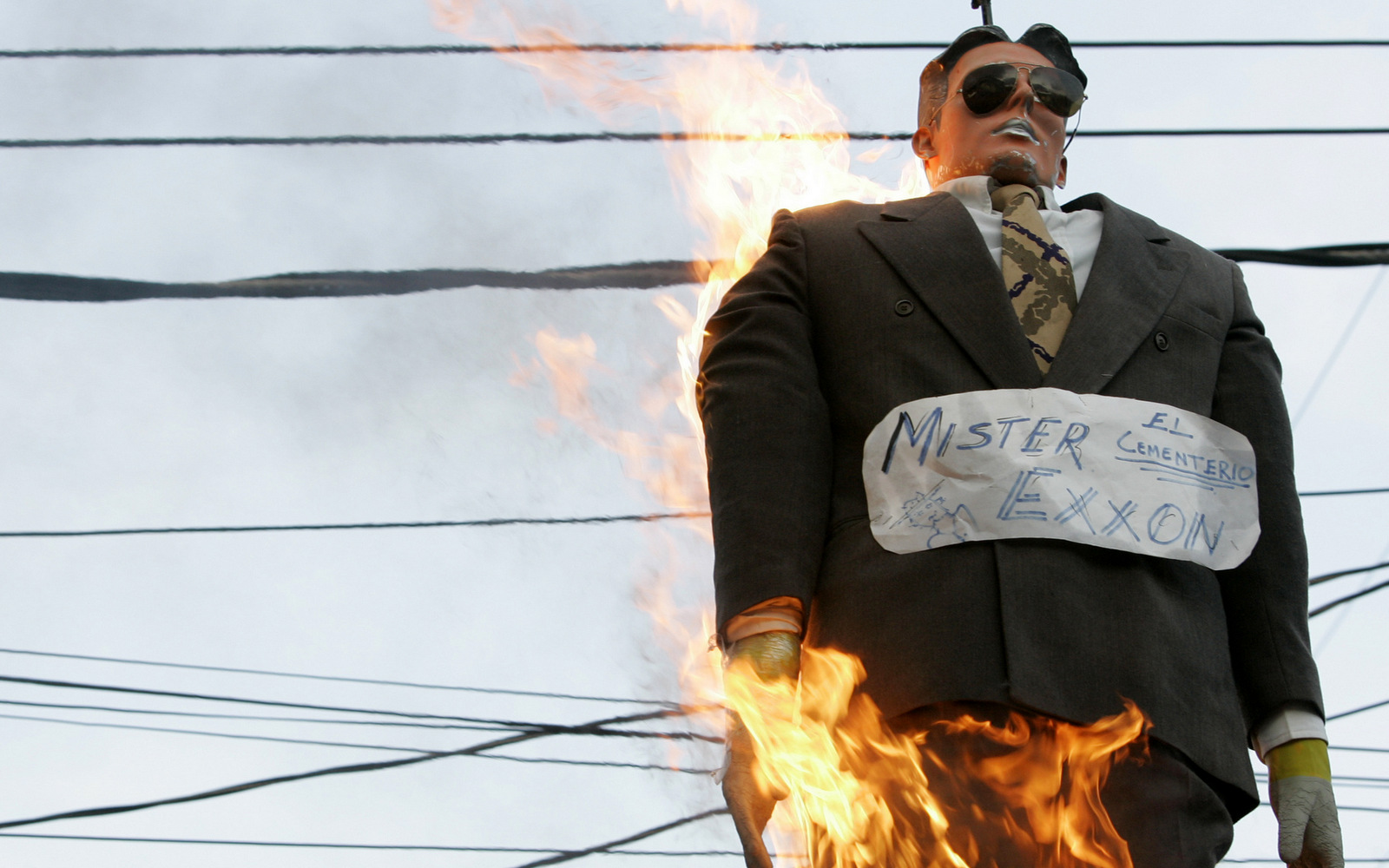 An effigy representing Judas Iscariot, with a sign that labels it also as “Mr. Exxon”, referred to the Texas-based Exxon Mobil oil corporation, is burned during Holy Week in Caracas, March 23, 2008. (AP/Howard Yanes)
An effigy representing Judas Iscariot, with a sign that labels it also as “Mr. Exxon”, referred to the Texas-based Exxon Mobil oil corporation, is burned during Holy Week in Caracas, March 23, 2008. (AP/Howard Yanes)
In other words, the U.S. State Department oversees the program that is literally writing the regulatory and financial architecture that will govern energy extraction in Guyana. And Tillerson, the former CEO for ExxonMobil, is the top official at the State Department. The conflict of interest is clear as day.
Indeed, ExxonMobil has effectively made Guyana into a subsidiary. As the Washington Post noted:
“…countries such as Guyana that have no existing oil industry are considered ‘frontier’ locations, and typically offer the most lucrative terms to foreign companies willing to invest. Guyana’s foreign partners stand to earn 60 to 65 percent of profits… a far larger share than what more established nations are willing to offer investors.”
Does anyone really believe that the State Department is not going to target Venezuela when it is led by a man who has fomented conflict with Venezuela, is raking in billions from Venezuela’s neighbor and has a long-standing vendetta against the Bolivarian Republic?
In fact, Tillerson’s oil goons have already uncorked the champagne numerous times this year, having announced multiple oil finds off the coast that are worth billions. Naturally, this is as much political as economic. For Tillerson and Trump, every barrel of oil extracted from Guyana is a thumb in the eye of the Venezuelan government.
Oil as a geopolitical weapon
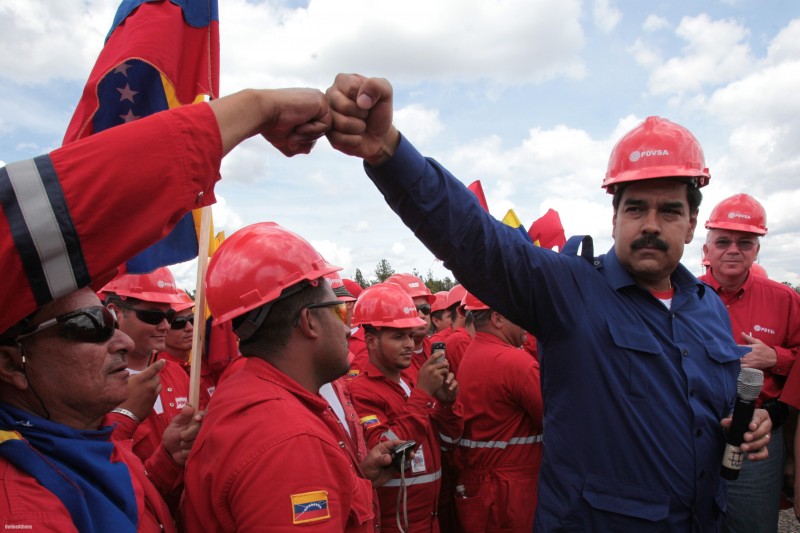 Venezuelan President Nicolas Maduro fist bumps a worker of the state-run oil company PDVSA during a visit to the Orinoco oil belt in Venezuela in 2013. (Photo: Miraflores/AP)
Venezuelan President Nicolas Maduro fist bumps a worker of the state-run oil company PDVSA during a visit to the Orinoco oil belt in Venezuela in 2013. (Photo: Miraflores/AP)
However, it would be a mistake to assume that U.S. policy toward Venezuela revolves exclusively around the profits to be made by ExxonMobil and other oil companies. While that is undoubtedly a factor, ultimately it is about political leverage and strategy vis-à-vis rival powers and power blocs.
Consider the fact that Venezuela’s oil reserves alone account for roughly one-quarter (24.8 percent) of all proven crude oil reserves within the Organization of Petroleum Exporting Countries (OPEC). This makes Venezuela hugely influential when it comes to decisions about oil production and, consequently, global oil prices. And when you couple Venezuela with Iran, a key ally of the Bolivarian Republic, both countries together account for nearly 40 percent of OPEC crude. Add to that non-OPEC member Russia, which accounts for 12.4 percent of global crude production, just behind Saudi Arabia and the U.S., and you begin to see just how significant these three countries are to global oil prices and production.
One must also consider Saudi Arabia, which closely trails Venezuela in terms of proven crude reserves (22 percent of OPEC reserves). The centrality of Venezuela should be immediately apparent. Installing a right-wing, pro-U.S. government in Venezuela would mean that the U.S. would effectively control, or at least have significant influence over, nearly 85 percent of OPEC production (Venezuela and the Gulf monarchies), thereby isolating Iran within the grouping. Put differently, Venezuela is the only thing keeping OPEC from being a plaything of Washington and Wall Street.
Russia and China also figure centrally in this calculation. With Venezuela under Washington’s boot, Moscow and Beijing would be significantly weaker, as they would have no influence over OPEC. Nor would they be able to satisfy each other’s needs alone – Russia needs consumer goods and imports far beyond what China can provide, and China needs energy and other raw materials far beyond what Russia can offer.
In effect, regime change in Venezuela would cut the legs out from under Moscow and Beijing.
An instructive example can be found in Venezuela’s neighbor, Brazil. An oil exporter almost as large as Venezuela in terms of production – Brazil accounts for 3 percent of global crude production, while Venezuela accounts for 3.1 percent – Brazil saw a quick political transformation in the form of a coup against the democratically-elected government of Dilma Rousseff, a coup that was orchestrated by right-wing elements in the country and their backers in the U.S.
And with the takeover of the government by the right wing and Goldman Sachs, Brazil’s oil exporting potential flipped overnight from a liability to an asset for Washington and Wall Street. Trump and Tillerson seem to have a similar vision for Venezuela.
The Sino-Venezuelan partnership
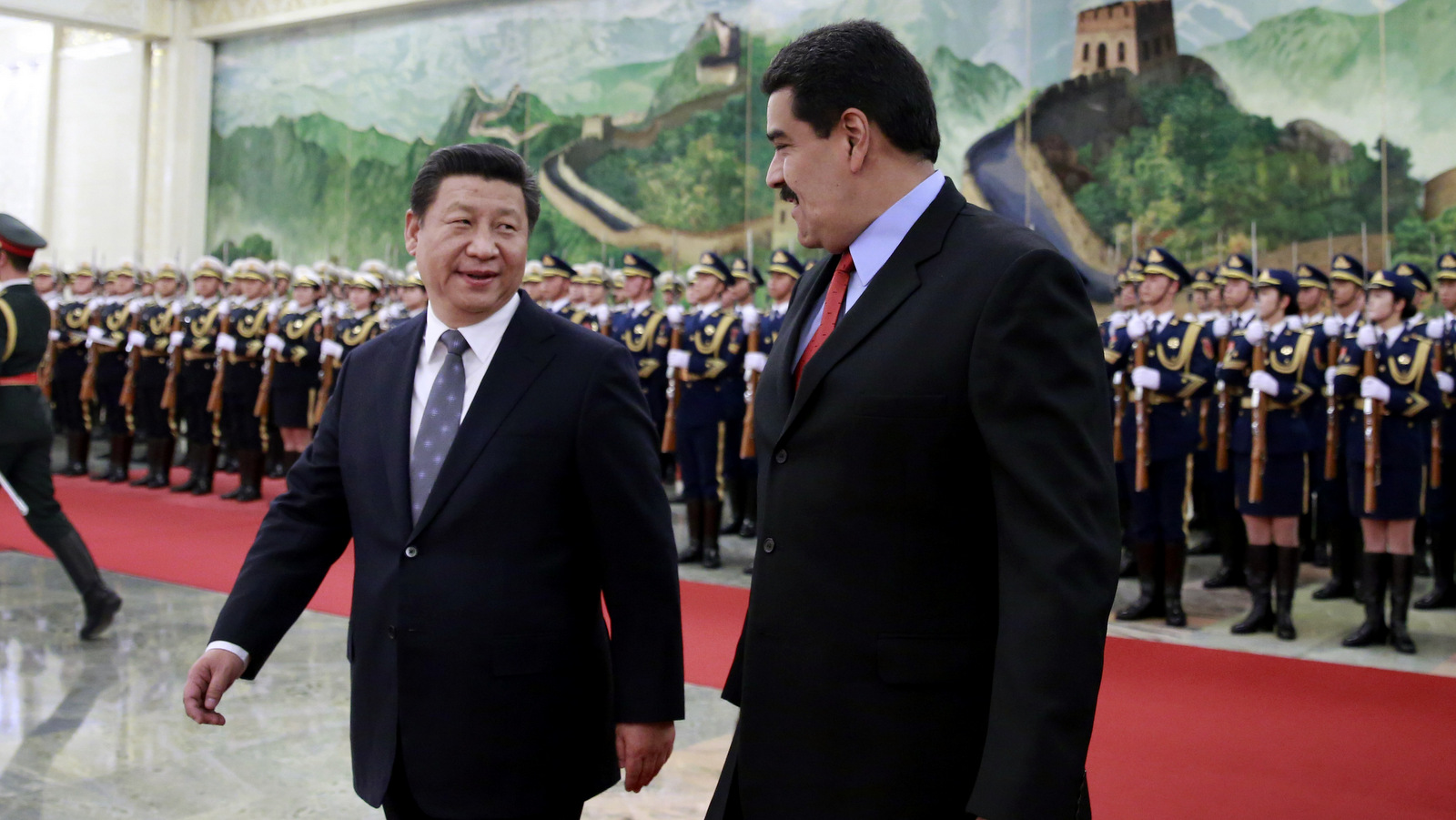 Venezuela’s President Nicolas Maduro, right, chats with Chinese President Xi Jinping after a welcome ceremony at the Great Hall of the People in Beijing, China Wednesday, Jan. 7, 2015. (AP/Andy Wong)
Venezuela’s President Nicolas Maduro, right, chats with Chinese President Xi Jinping after a welcome ceremony at the Great Hall of the People in Beijing, China Wednesday, Jan. 7, 2015. (AP/Andy Wong)
For decades, corporations in the U.S. saw Venezuela as little more than an American possession, an oil colony whose dependence on U.S. exports made it little different from a true colony in the traditional sense of the word. However, with the ascendance of Hugo Chavez and the Bolivarian Revolution, Venezuela ceased to be a dependent client of the U.S., and instead became a political adversary.
One key aspect of Venezuelan economic relations with other countries that has undoubtedly rubbed strategic planners the wrong way has been its ongoing partnership with China. Under Hugo Chavez and Nicolas Maduro, Venezuela has signed countless deals with Beijing, many of which are based on an oil-for-credit framework wherein Venezuelan oil underwrites Venezuelan borrowing from Chinese banks. The Chinese cash has been used to stave off default and pay the financial obligations of the Venezuelan government.
Beyond that, Venezuela and China have inked agreements in the areas of energy, mining, finance, infrastructure and agriculture. There is also the Joint Chinese-Venezuela Fund, which finances infrastructure projects and economic development in the Bolivarian Republic.
In February 2017, China and Venezuela signed a raft of agreements, including the construction of a refinery in China that will process 400,000 barrels of crude per day, 70 percent of which will come from Venezuela. The deals totaled $2.7 billion.
China has also become one of the leading manufacturers of transportation in Venezuela, with taxis and buses being purchased or manufactured by the Chinese for the Venezuelan market. This tangible example of the Venezuela-China relationship illustrates the importance of Beijing to the daily life of Venezuela.
Unlike China, Russia has little need for Venezuelan oil. However, the one other area of Russian economic might is critical for the Bolivarian Republic: weapons.
According to Rostec, a Russian state corporation involved in the sale of military hardware to Venezuela, theestimated value of Russia-Venezuela arms contracts is roughly $12 billion. From 2005 to 2013, Venezuela was the largest buyer of Russian weapons in Latin America, with roughly $11 billion in purchase contracts.
But Russia’s ties to Venezuela are not simply about mutual enrichment, there is also a somewhat predatory aspect to the relationship, one that is likely making observers in both Washington and Caracas wary. Russia’s $1.5 billion loan to Venezuela in November 2016 came with the condition that the Venezuelan state oil company PDVSA pledge a 49.9-percent stake in Citgo, the U.S. subsidiary of PDVSA, as collateral for the loan.
This means that Russia’s state oil company Rosneft, run by Russian President Vladimir Putin’s close friend Igor Sechin, could control much of Venezuela’s economic clout. Translation: Russia wants Venezuelan oil to use as leverage against the U.S.
Venezuela has become a geopolitical flashpoint in recent years. As the country has moved forward on the path of socialism and anti-imperialism, it has increasingly been targeted by a wide range of destabilization tactics, as well as the collapse of global oil prices in 2014 and 2015 that crippled the Venezuelan economy.
The future of the revolution?
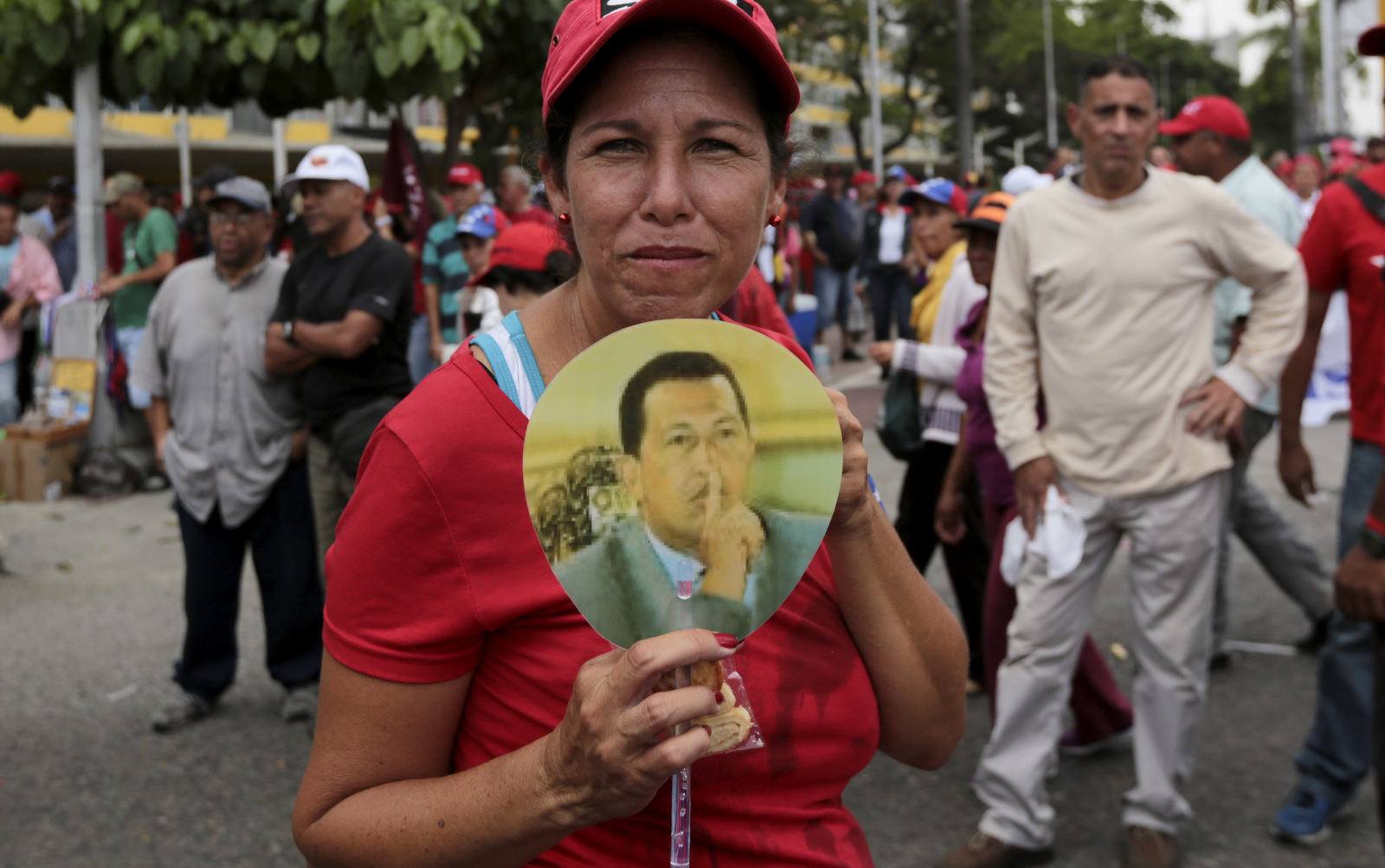 A government supporter holds an image of Venezuela’s late president Hugo Chavez, during a march in Caracas, Venezuela, Wednesday, April 19, 2017. (AP/Fernando Llano)
A government supporter holds an image of Venezuela’s late president Hugo Chavez, during a march in Caracas, Venezuela, Wednesday, April 19, 2017. (AP/Fernando Llano)
Now, with Trump and Tillerson at the helm of the imperial warship, it seems that the target on Venezuela’s back has grown larger still. And with the right-wing resurgence throughout Latin America, strategic planners might feel that it’s only a matter of time before they achieve their objective: the destruction of the Bolivarian Revolution and a return to Venezuelan dependence on the U.S.
But while it seems that the U.S. is in control, there’s just one small issue – chavismo, the political ideology associated with the ideas and governing style of Hugo Chavez.
While Washington won’t officially admit it, there is a fear that any direct intervention in Venezuela could trigger a mass outpouring of anti-U.S., pro-Chavez sentiment. The U.S. government hopes that Venezuela will collapse from within, thanks in large part to the millions of dollars spent by USAID and the National Endowment for Democracy to fund the right-wing opposition and other anti-government interests.
The trouble is that, despite the economic instability and destabilization, tens of millions of Venezuelans have made it clear that they’ll never accept being put in colonial chains again. And as the right wing demonstrates and demonizes, defenestrates and destabilizes, the revolution continues.
The question in the coming months will be whether China and, to a lesser extent Russia and Iran, will recognize that relations with Venezuela are not simply about money and profit, but about gaining leverage against the U.S. Will Venezuela be seen in its proper context as the frontline in the fight against the U.S. empire? Or will it be left to fend for itself as the imperial dogs of war howl for the blood of the Bolivarian Republic?
___
http://www.mintpressnews.com/the-strategy-behind-washingtons-destabilization-of-venezuela/227967/
